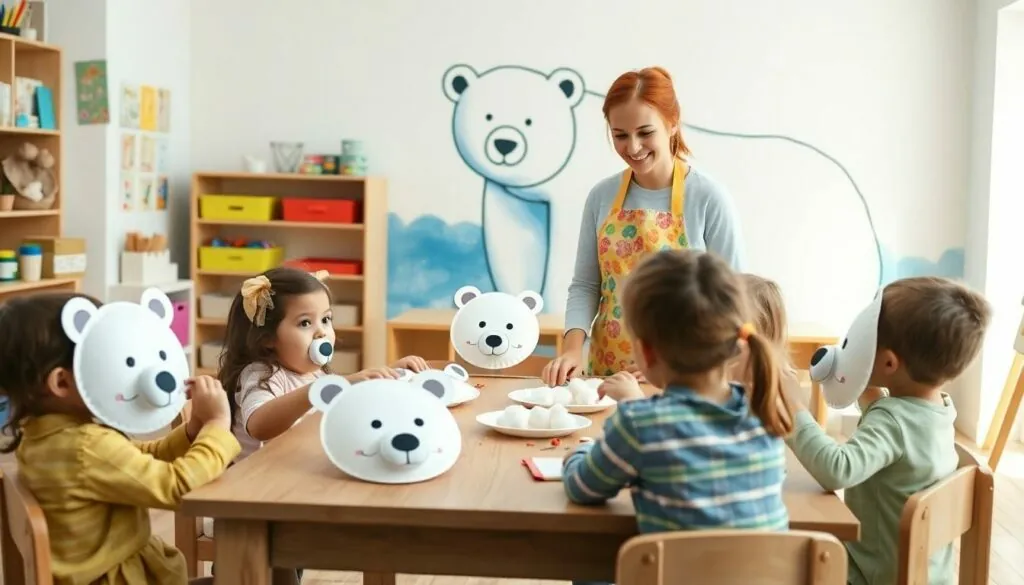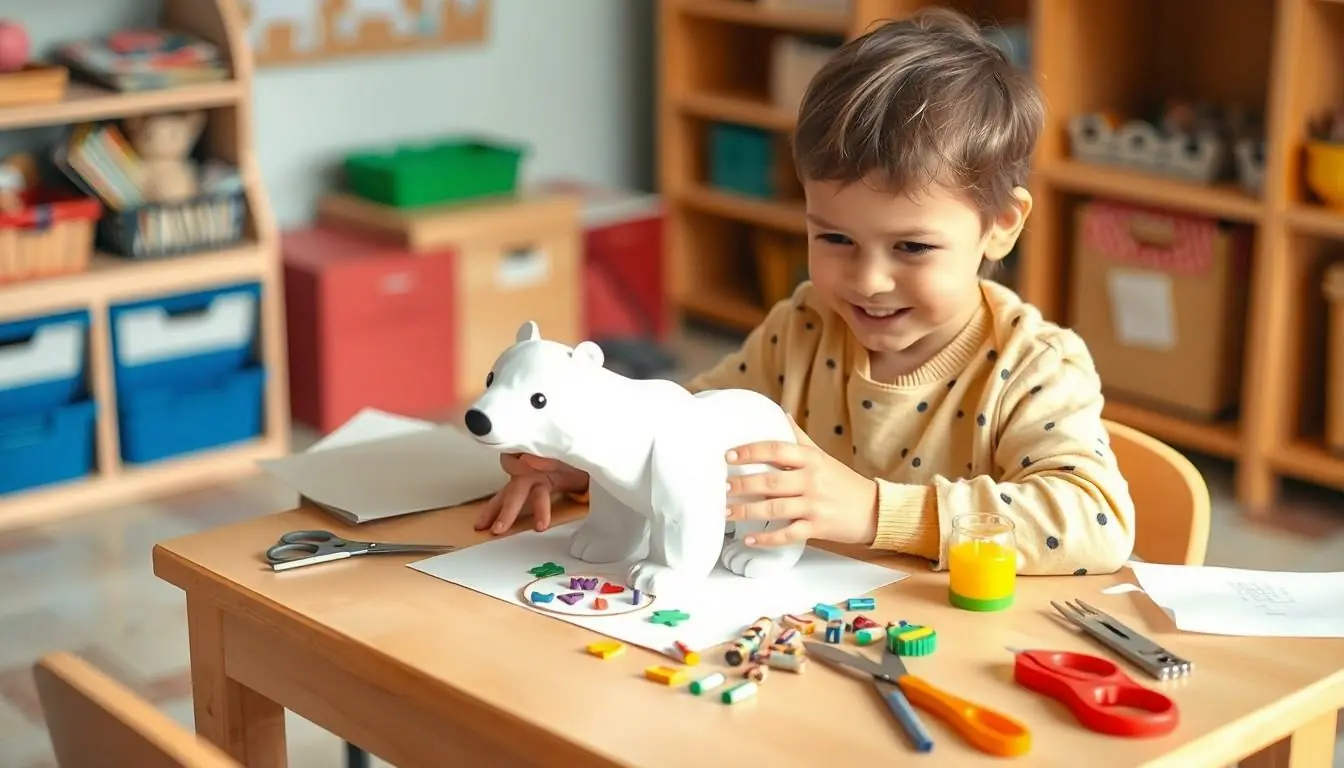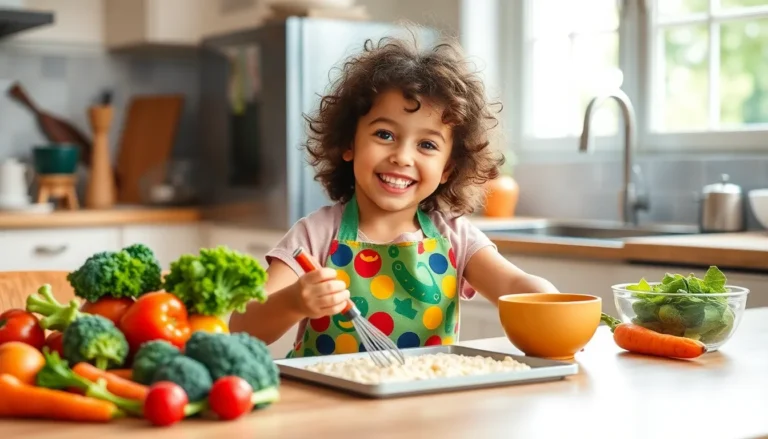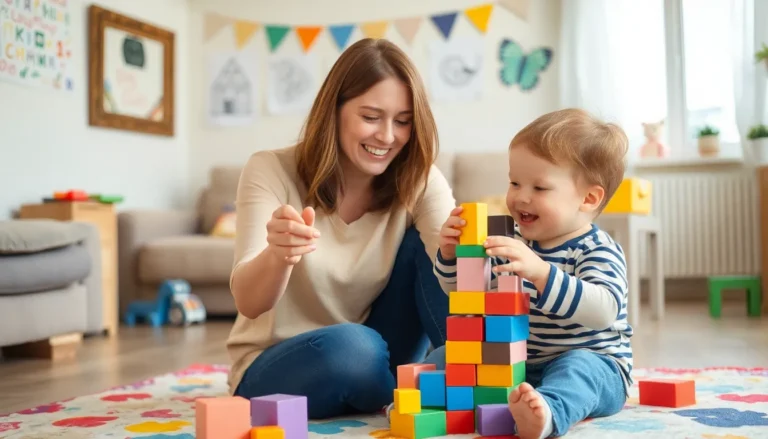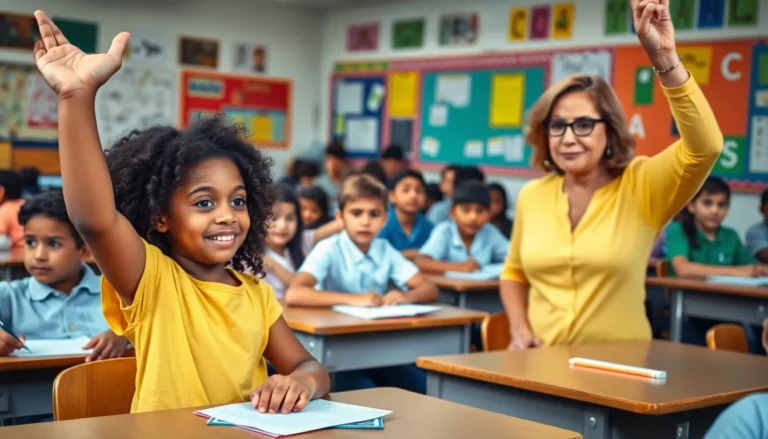Table of Contents
ToggleWhen it comes to preschool crafts, nothing quite compares to the charm of polar bears. These fluffy, white giants capture the imagination of little ones while teaching them about the wonders of the Arctic. Who wouldn’t want to create their very own polar bear masterpiece? It’s a win-win: kids get to unleash their creativity and learn about wildlife, all while having a blast!
Overview of Polar Bear Craft Preschool
Polar bear crafts captivate preschoolers, combining fun with educational themes. Children engage in hands-on activities that promote creativity and fine motor skills. Making polar bear masks or paper crafts serves as a gateway to discussions about Arctic habitats and wildlife.
Crafting stimulates imagination and encourages teamwork among kids. Group activities, like creating a polar bear mural, foster collaboration and communication. Students can share ideas, combining their talents to produce unique displays.
Incorporating stories about polar bears enhances the crafting experience. Reading age-appropriate books about polar bears provides context and knowledge, adding depth to their creations. Lessons can cover polar bear facts, like their diet and habitat, allowing children to learn while they create.
Materials for crafts can vary, including cotton balls for fur, construction paper for bodies, and googly eyes for a playful touch. Simple instructions enable even the youngest to participate in the crafting process. Safety scissors and non-toxic glue make typical crafting materials suitable for preschoolers.
Craft time can also serve as a transitions in routine. Celebrating the completion of projects reinforces a sense of accomplishment among children. The excitement of showcasing their polar bear crafts can lead to discussions about conservation and empathy for animals in vulnerable habitats.
Organizing themed craft days can further enhance the preschool curriculum. Engaging activities not only teach about art but also provide insight into the natural world. Parents appreciate the blend of creativity and education, enriching their children’s learning experiences.
Benefits of Craft Activities for Preschoolers
Craft activities offer numerous advantages for preschoolers, fostering both creativity and learning. Engaging in these hands-on projects stimulates various areas of development.
Cognitive Development
Crafting encourages critical thinking as children make decisions about colors, shapes, and arrangements. Problem-solving skills come into play when children figure out how to assemble different craft components. Creative expression flourishes as they represent ideas and emotions through their artwork. Additionally, discussions about polar bears can enhance vocabulary while instilling curiosity about wildlife and ecosystems. Exposure to new materials and techniques boosts cognitive flexibility, preparing them for more complex tasks in the future. Ultimately, engaging in craft activities creates a rich learning environment where knowledge and creativity grow.
Fine Motor Skills
Creating crafts hones fine motor skills essential for daily tasks. Grasping scissors, placing small objects, and manipulating materials all require precise hand movements. When preschoolers paint or color, they develop hand-eye coordination and dexterity. Engaging in these tasks repeatedly strengthens muscles in their hands and fingers. Simple activities like cutting paper or glueing components help improve their control and precision. As children design their polar bear crafts, skills acquired during this time lay the groundwork for more advanced activities like writing. Overall, these experiences provide a solid foundation for physical development while making learning enjoyable.
Popular Polar Bear Craft Ideas
Polar bear crafts engage preschoolers in playful learning. These activities combine creativity with education, allowing children to explore the Arctic world.
Paper Plate Polar Bears
Creating paper plate polar bears encourages imaginative expression. Children can use white paper plates as the base for their projects. They transform each plate into a bear by adding googly eyes, ears, and a snout. Simple instructions enable even the youngest to participate. After painting or gluing on cotton balls for texture, each child can proudly showcase their creation. Discussions about polar bear appearances can enhance this activity, enriching their understanding of these animals.
Polar Bear Masks
Making polar bear masks allows for both creativity and role-play. Using white cardstock, kids cut out face shapes before decorating them with markers or crayons. Adding elastic bands keeps the masks secure while children engage in imaginative play. This activity sparks conversation about polar bear behaviors, further connecting craft time to educational themes. Each child enjoys the fun of wearing their masks during a themed play session, making learning more dynamic and engaging.
Incorporating Learning with Polar Bear Crafts
Polar bear crafts serve as effective educational tools, integrating fun with learning opportunities. Engaging in these activities sparks curiosity about Arctic wildlife among preschoolers.
Educational Themes
Crafting promotes deeper understanding of relevant educational themes. By creating polar bear projects, children explore topics like wildlife conservation, geography, and animal behavior. Discussing the polar bear’s habitat during crafting reinforces lessons on ecosystems. Vocabulary expands as children learn terms related to the Arctic, enhancing language skills. Engaging with stories about polar bears invites discussions about their diet and lifestyle, cultivating empathy and understanding. Such themed experiences encourage children to ask questions, fostering critical thinking.
Seasonal Crafts
Seasonal crafts offer exciting ways to explore different aspects of polar bears. Winter-themed projects like snowflakes and igloos complement polar bear crafts, creating a cohesive learning experience. Springtime brings opportunities to create crafts featuring melting ice or exploring changes in habitats. Engaging in seasonal activities helps children connect crafting with nature’s cycles. These seasonal projects encourage creativity while reinforcing seasonal changes and their impact on wildlife. Inviting parents to participate enriches the experience, transforming crafting into a shared learning journey.
Conclusion
Polar bear crafts offer preschoolers a unique blend of fun and education. These activities not only spark creativity but also deepen children’s understanding of Arctic wildlife. As they create their polar bear masterpieces, kids engage in valuable discussions about habitats and conservation.
The hands-on approach fosters teamwork and enhances fine motor skills, setting the stage for cognitive development. By integrating storytelling and imaginative play, polar bear crafts become more than just projects; they transform into meaningful learning experiences.
With endless possibilities for creativity and exploration, incorporating polar bear crafts into preschool activities enriches both the curriculum and children’s connection to nature.

